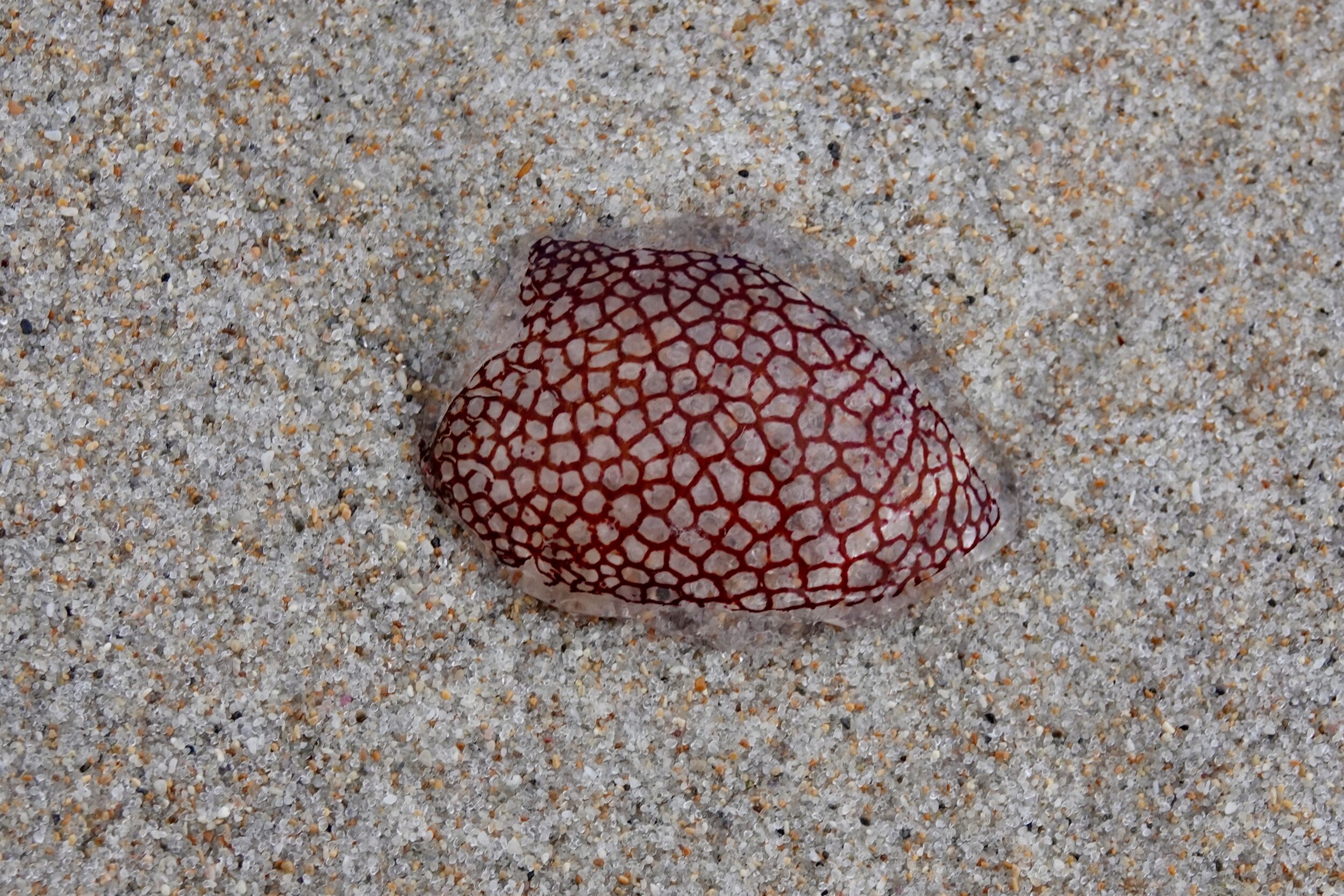Q #1: what is the pictured jellyfish-like fragment from a (presumably) recently-deceased marine creature?
A: I do not know.
Q #2: upon what has it “washed up”, in very shallow water?
A: sand, obviously.
(on Lights Beach, at eastern end of William Bay National Park, on Western Australia’s south coast)
Bigger question: what is sand, exactly?
Particles of rock with diameters ranging from 0.06 mm to 2.00 mm. Most sands are formed of the mineral quartz. Sandy soils are loose, non-plastic, and permeable, and have little capacity to hold water.
The above definition, by Susan Mayhew, is in The Oxford Dictionary of Geography.
There are many others, and they are not mutually-consistent.
Quartz is not sands’ only mineral.
Sands are much more varied than many people imagine.
Wikipedia acknowledges this:
Sand has various compositions but is defined by its grain size. Sand grains are smaller than gravel and coarser than silt.
As it also notes, exactly what range of grain sizes qualifies something as “sand” – or as “gravel”, or as “silt” – are questions to which different “expert” sources give different answers.
Given our species’ inclination to contention, it is highly unlikely that we will ever agree on a single definition for any of the aforementioned.
Sandy soils are not all/always “loose”…and how, exactly, does one define “loose”?
And, of course, however defined, “sands”, “gravels” and “silt” do not always occur in splendid isolation from each other.
Click here for all of the (really good, I think) Wikipedia entry on sand.
A key section:
Sand can also refer to a textural class of soil or soil type; i.e., a soil containing more than 85 percent sand-sized particles by mass.[2]
The composition of sand varies, depending on the local rock sources and conditions, but the most common constituent of sand in inland continental settings and non-tropical coastal settings is silica (silicon dioxide, or SiO2), usually in the form of quartz.
Calcium carbonate is the second most common type of sand. One such example of this is aragonite, which has been created over the past 500 million years by various forms of life, such as coral and shellfish. It is the primary form of sand apparent in areas where reefs have dominated the ecosystem for millions of years, as in the Caribbean. Somewhat more rarely, sand may be composed of calcium sulfate, such as gypsum and selenite, as is found in places such as White Sands National Park and Salt Plains National Wildlife Refuge in the U.S.
Sand is a non-renewable resource over human timescales, and sand suitable for making concrete is in high demand.[3] Desert sand, although plentiful, is not suitable for concrete. Fifty billion tons of beach sand and fossil sand are used each year for construction.[4]
——-
Musical bonus
For many years Anja Lechner has been one of my favourite musicians.
The sheer excellence of this German cellist’s playing is always apparent, as is her non-trendy, never-gimmicky, open-minded attitude.
Over the last several decades Lechner has recorded a number of uncommonly fine collaborative albums with musicians from very different backgrounds/traditions.
Until this year, however, her discography lacked an entirely solo set.
An interesting, recent interview with Anja Lechner is here.
Bach Abel Hume has superb interpretations of two of J.S. Bach’s cello suites, framed by 10 pieces by less -“iconic” composers.
8 of those were penned by a very inventive, eccentric Scotsman.
Tobias Hume died in poverty, 40 years before J.S. Bach was born.
He pioneered pizzicato playing, and was likely also the first European composer to recognise stringed instruments’ percussive potential.
To my knowledge,Hume was the first to instruct string players to hit their instrument with its bow!
Anja Lechner’s solo album is wonderful, throughout.
Its ravishingly beautiful, delicately nuanced sound quality is the fruit of a happy marriage of Lechner’s musicianship, a highly skilled sound engineer, and the superb acoustics of Munich’s Himmelfahrtskirche.
The disc begins with Tobias Hume’s A Question.
